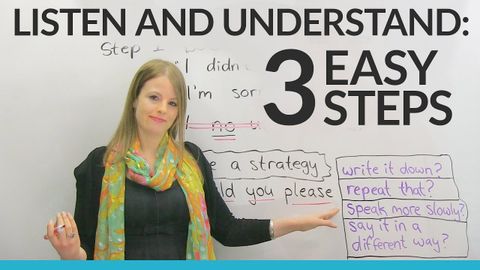3つの簡単なステップでリスニングと理解を深める (LISTENING & UNDERSTANDING in 3 Easy Steps)
李猴子 が 2021 年 01 月 14 日 に投稿  この条件に一致する単語はありません
この条件に一致する単語はありませんUS /məˈtɪriəl/
・
UK /məˈtɪəriəl/
- n. (c./u.)衣料;原材料;原料
- adj.関連な,重要な;世俗的な : 物質的な : 物質でできた
US /ɪkˈsprɛʃən/
・
UK /ɪk'spreʃn/
- n. (c./u.)表現;語句;表情;式;表現;表現
US /ˌkɑnvɚˈseʃən/
・
UK /ˌkɒnvəˈseɪʃn/
- n. (u.)会話;意思疎通;対話 (コンピューター)
エネルギーを使用
すべての単語を解除
発音・解説・フィルター機能を解除

